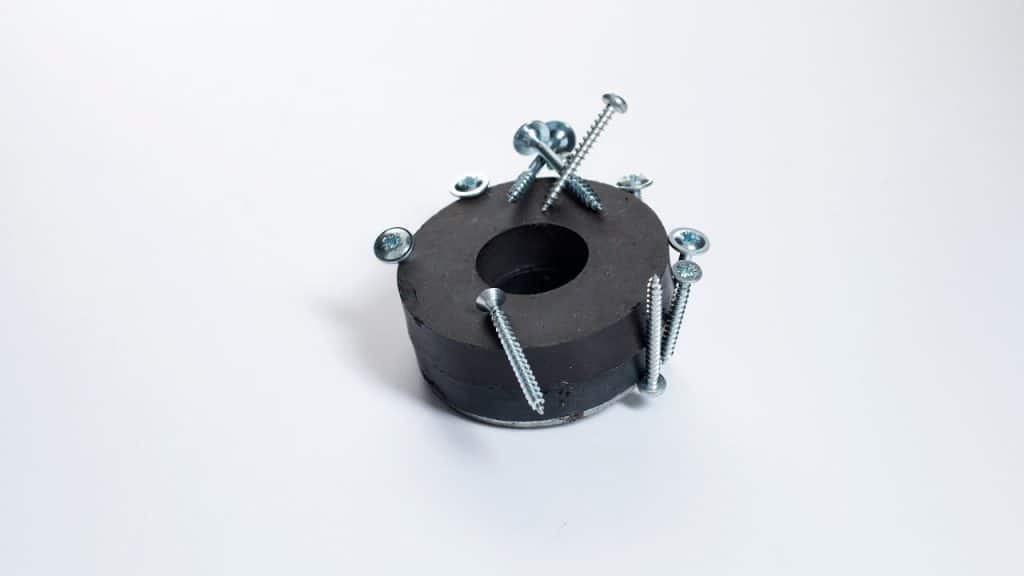Magnetism is a surprisingly interesting phenomenon. As a magnet fisher or someone who has come to appreciate magnets, it is good to know what kind of raw materials or objects are magnetic. So, in this article, we’re going to look into which materials are magnetic.
We interact with magnets on a daily basis. They help us with all kinds of domestic activities, are essential to science, and offer the opportunity to pull great treasures out of the water. Both permanent magnets and electromagnets are able to attract several different kinds of materials.
Different kinds of magnetic metals
Several different kinds of metal are linked to magnetism. Some are simply magnetic by default, whereas others can be used in the manufacturing process of magnets. Iron, cobalt, nickel, and gadolinium aren’t just magnetic, they are also able to retain magnetism.
Iron
When thinking about magnetism, iron is the first material that comes to mind. This chemical element has the scientific abbreviation “Fe”. It can be harvested in great quantities from iron ore. Iron is an important natural raw material, because it is used in countless utilitarian objects. You may think of tools and constructions of buildings. Iron has a strong so-called crystalline structure, which makes it very reactive to magnetism.
While magnet fishing, you’ll surely stumble upon countless iron or steel (as steel is made out of iron) objects under water. Consider things like tools, materials used by anglers, safes, bicycles, signposts, and much more.

Cobalt
Cobalt is another big name in the world of magnet fishing. This silver-colored element is scientifically denoted as “Co” and can be found in meteorites. Even the human body contains one or two grams of cobalt. Cobalt can be magnetized and even turned into a magnet. Just like neodymium fishing magnets, these are regarded as rare earth elements (EER).
Nickel (and gadolinium)
Nickel is a special chemical element denoted with the symbol “Ni”. It has, just like iron and cobalt, ferromagnetic properties. It is often used as an element to enhance the magnetic properties of materials. Nickel can be found in jewelry and certain tools. The final element on this list is gadolinium. Gadolinium is a metallic element denoted with the symbol “Gd”, silver in color and particularly flexible.
Why are these metals magnetic?
Magnetic metals like iron, cobalt, nickel, and gadolinium aren’t magnetic by themselves. Although, zooming in on the metallic structure reveals something exceptional. A phenomenon referred to as magnetic domains. When a magnet comes into contact with these domains, they are all pushed into the same direction by the magnetic field. This, in turn, will cause these materials to be temporarily magnetic themselves.
To understand this matter through and through, you would have to invest a great amount of time. The fundamentals of magnetism are easy to understand, yet the far-reaching implications are utterly complex.
What does this mean for magnet fishing?
As a magnet fisher, you might be interested in the implications this has for you. If you have already gathered some experience with this hobby, you will have noticed that it is mostly scrap metal that comes out of the water. Sometimes you’ll hit on smaller objects containing cobalt or nickel. But, gold or silver? You won’t find those. Unfortunately, gold and silver are not magnetic in their pure form.
Iron, cobalt, and nickel are sometimes used in the manufacturing of jewelry. This gives some precious metals the appearance as if they were magnetic, but that isn’t the case. Moreover, magnetism is a way to discern whether precious metals are pure. But, don’t trust this method blindly, as some gold alloys can be magnetic.
With a strong neodymium fishing magnet, it is possible to pull countless objects out of the water while magnet fishing. This answers the question of which materials are magnetic. Just a little iron, cobalt, or nickel contained in an object is sufficient for it to be attracted to your magnet.





